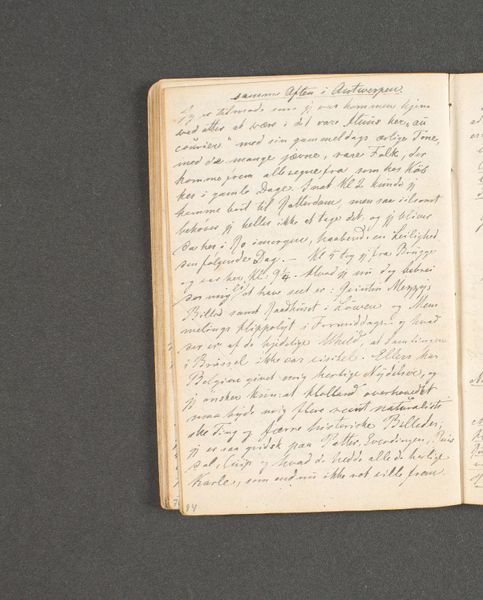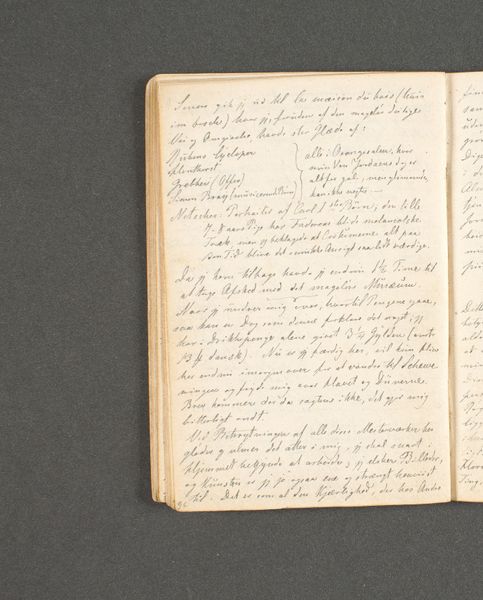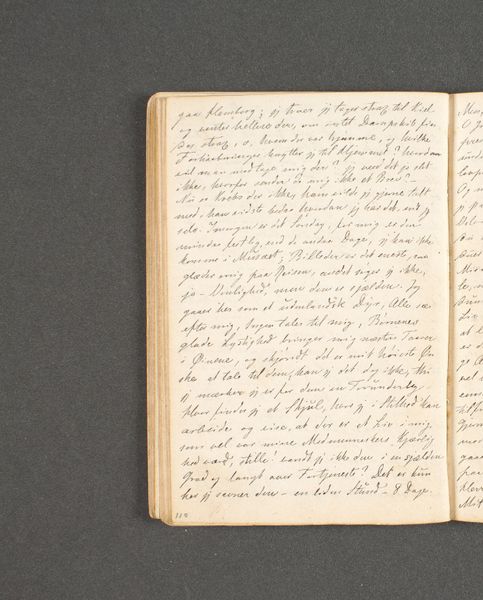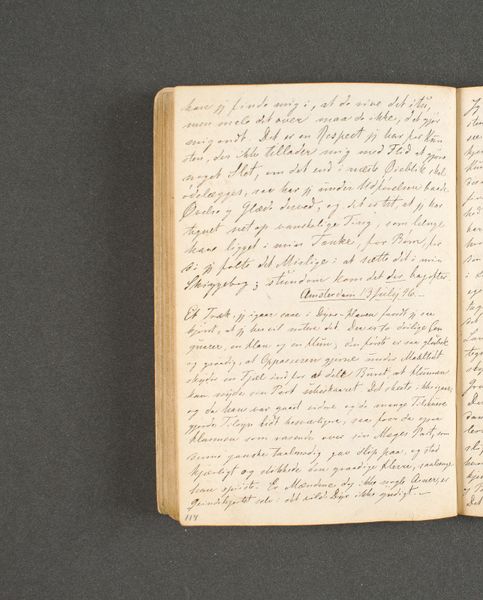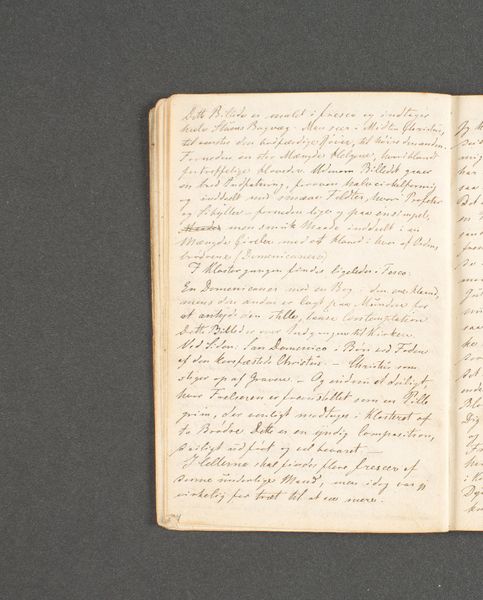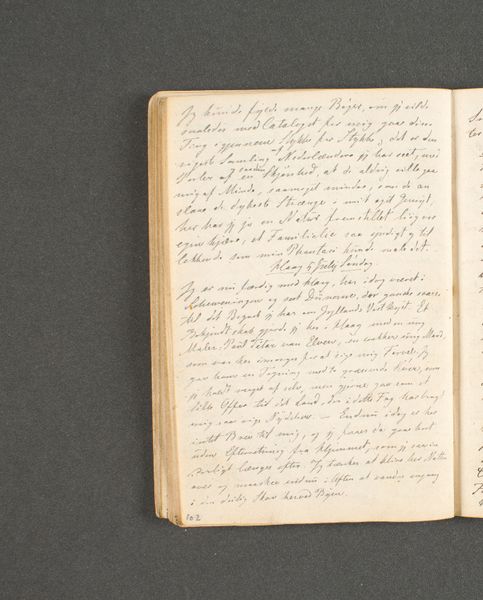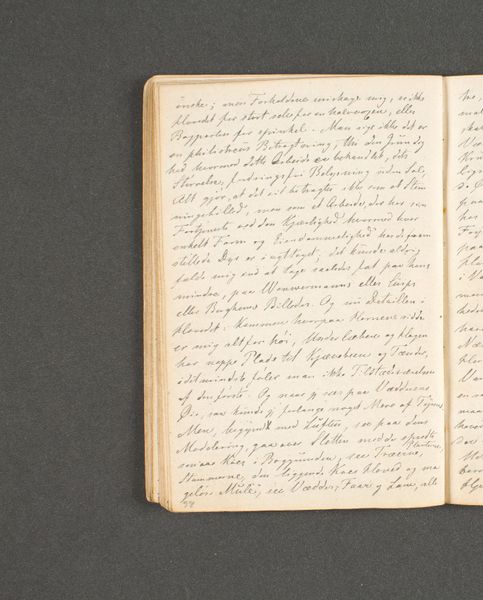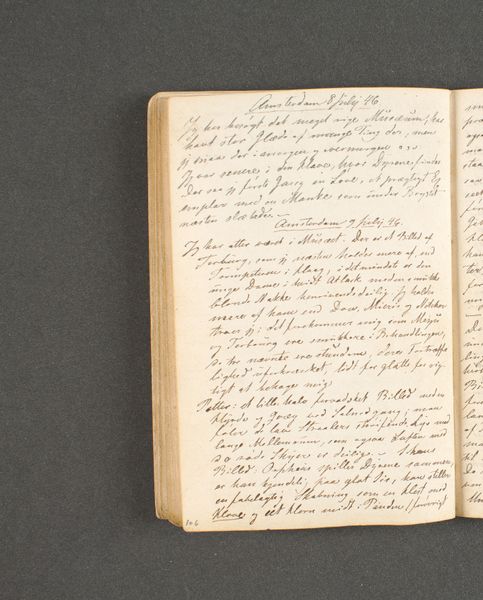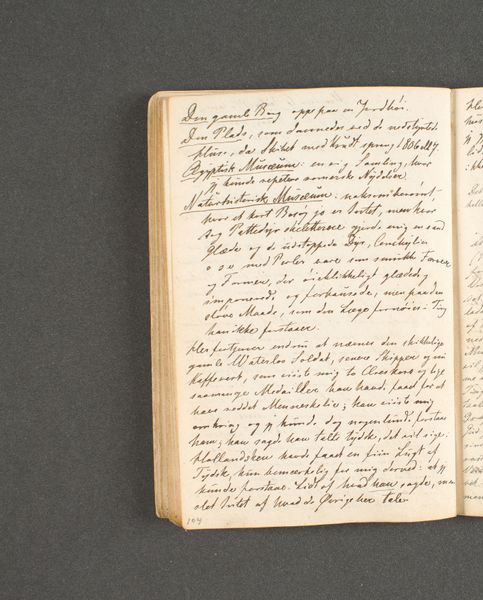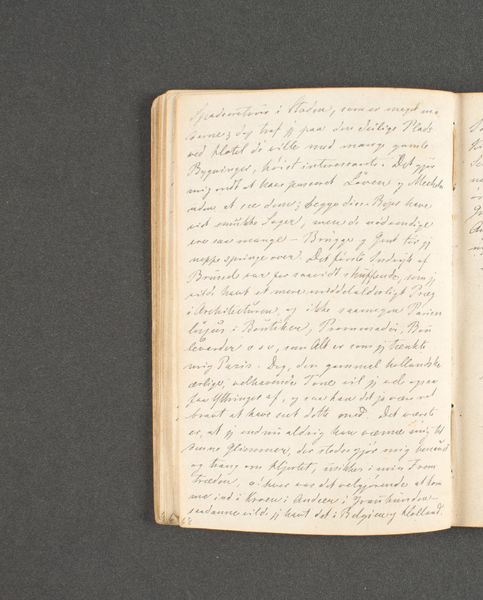
drawing, paper, ink
#
drawing
#
landscape
#
paper
#
ink
#
romanticism
Dimensions: 131 mm (height) x 89 mm (width) (bladmaal)
Curator: Immediately, the density of the marks creates an atmosphere of introspection. Is this meant to be purely documentary, or something more expressive? Editor: Well, this is "Rejsedagbog. Haag", or "Travel Journal. The Hague," dating back to 1846, by Johan Thomas Lundbye. It's currently held at the SMK, the National Gallery of Denmark. This sketchbook page, rendered in ink on paper, provides a window into Lundbye's artistic process and the context of his travels. Curator: A window indeed. Look at the even spacing and near uniformity of the text's size, giving it an almost textile-like appearance. And it’s filled with observations that capture the character of a specific place and time. You could almost consider it a study in the aesthetics of record-keeping. What does this particular piece communicate about The Hague, then? Editor: Lundbye was part of the Danish Golden Age. It was a period where national identity and Romanticism deeply influenced artistic expression. Lundbye wasn’t just sketching scenery; he was actively participating in the construction of a Danish aesthetic, infusing it with his experiences abroad. These pages offer glimpses of Dutch life viewed through a distinctively Danish lens. Curator: It's remarkable how an unassuming drawing like this embodies larger socio-political undercurrents. I’m drawn to how his journal entries could have served a political role by documenting and interpreting foreign lands. The art, then, subtly affirmed Danish identity and culture through this contrast. Editor: On the other hand, if you just let your eye play over the page, there's real artistry in the way he orchestrates these tiny, controlled strokes of ink to conjure a feeling of place, irrespective of cultural or political intentions. Curator: Absolutely. It makes you think about how art functions as a cultural artifact—how artists consciously or unconsciously embed their values, their biases, their entire worldview into what they create. Editor: It's clear there's room for both readings here—one that recognizes the larger narratives at play and the other where we focus on how his pen dances across the page, making it something uniquely lovely and self-contained.
Comments
No comments
Be the first to comment and join the conversation on the ultimate creative platform.


